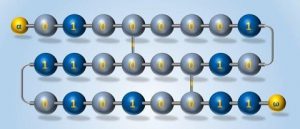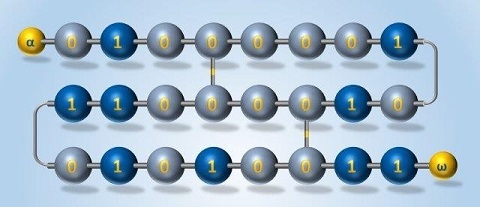
Drawing inspiration from nature, researchers are making polymers with ever-more precise compositions on demand. Using multistep synthesis tools pulled from biology, biochemistry and organic synthesis, a group is reporting that it is developing ultra-high precision synthetic polymers with precisely controlled chain lengths and monomer sequences.
The resulting information-containing macromolecules can be deployed for data storage, anti-counterfeiting and traceability technologies.
Based on news that the American Chemical Society (ACS) published, “There are basically two types of polymers,” says Jean-François Lutz, Ph.D. “One type is plastic, which is made by humans. The other type is called a biopolymer, and it is a much more defined molecule. In fact, humans are mostly constructed with polymers – DNA and proteins.”
Conventional chemistry fabrication techniques can produce polymers of irregular lengths and sequences. But, Lutz notes, nature is more precise. There is a huge difference in structural quality between manmade and biological polymers, he explains. “The purpose of our work is to fill in the gap – to make synthetic polymers using biological inspiration.”
Generally, sequence-controlled polymers can be constructed either by chain-growth or step-growth polymerizations. Both approaches can achieve polymer chains of different lengths. However, when different monomers are combined into polymers, they will vary in chain-to-chain composition and sequence. Such polymers are not ideal for applications, such as coding, in which a precise, uniform structure is needed.
Lutz and his group at the Institute Charles Sadron have been working on building synthetic molecules with the same precision and uniformity as biological macromolecules. “We got the initial inspiration from DNA, which is a polymer made with four monomers: adenine, thymine, guanine and cytosine,” Lutz says. “Although DNA is a polymer that codes for the very information that makes us human — an important achievement — it is really not the best structure for many other things. We thought that maybe we could make a polymer that is just as information-rich, but enhance the structure so it could be used for a variety of applications.”
A press conference on this topic will be held Monday, April 1, at 11 a.m. Eastern time in the Orange County Convention Center. Reporters may check-in at the press center, Room W231B, or watch live on YouTube http://bit.ly/ACSLive_Orlando2019 (“ACSLive_Orlando2019” is case-sensitive). To ask questions online, sign in with a Google account.
For more information please read: “Source”













